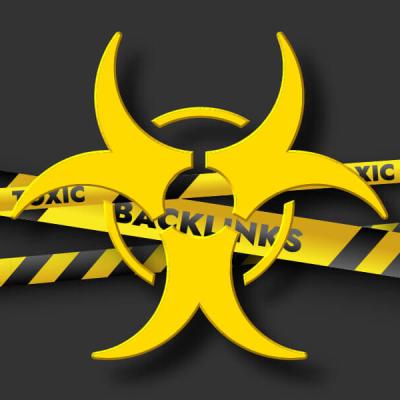
Disavowing Toxic Backlinks
8 minutes read
Toxic and bad backlinks can be the bain of any SEO campaign and be frustrating for any website owner. Never before has gathering healthy backlinks been so crucial to SEO and website rankings. In this article, we will look at what bad backlinks are, how to identify them, options to remove them, and a website owner's last resort - The Disavowel tool.
Let's take a look at what we'll cover today:
- Understanding Bad Backlinks
- Consequences of Poor Quality Backlinks
- Removing Unnatural Links: Preventing Manual Actions
- Strategies for Eliminating Unwanted Backlinks
- The Disavowal Tool: A Closer Look
- Summary
Backlinks are among the most important search engine optimisation (SEO) components. Quality backlinks, inbound links from popular, authoritative sites, boost a website's SEO profile. Backlinks from spam sites or outright junk, on the other hand, can do real harm.
Understanding Bad Backlinks
Analysing Poor Backlink Quality
Any website owner should be careful about the backlinks his/her website has. Some of the backlinks may be of poor quality and damage your website's popularity in terms of evaluation by the search engine. Poor-quality backlinks often come from spammy or irrelevant websites. These links can lead to penalties from search engines, substantially lowering your site's ranking.
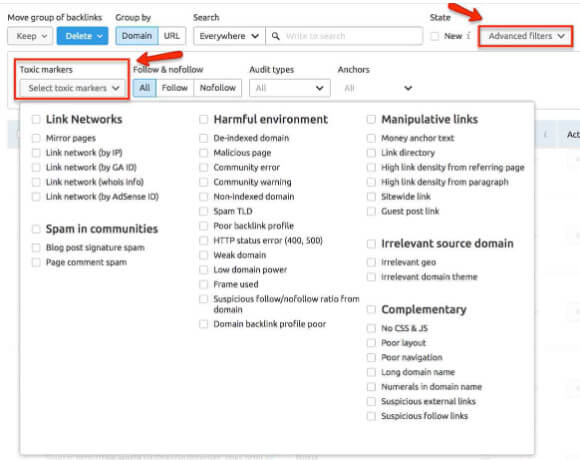
Google's Algorithm Is Too Smart
Additionally, these backlinks can harm your website's credibility and trust in the eyes of your audience. Search engines like Google have sophisticated algorithms that can detect manipulative link-building practices and may penalise sites that engage in these tactics. This can decrease organic traffic, making it harder for potential customers to find your website. Stay true to your backlink profile integrity for online success. Accordingly, aim to fetch the most relevant and of the best marketing quality backlinks that will increase your search and web rank, as well as invest you in the confidence of your audience, securing their trust in your website. Perform regular checks on your backlinks to stay on top of them.
Consequences of Poor Quality Backlinks
Search engine ranking of a site on a search engine page is one of the core factors in digital marketing that determines a site's organic traffic. This ranking criterion is divided into many points; however, backlinks are considered a crucial factor affecting a site's ranking. While a site with good quality backlinks can reach the top of rankings, bad ones can result in penalties from popular search engines like Google.
High-Quality Over Quantity
Bad backlinks are backlinks from poor-quality, unrelated or spammy sites. Search engines such as Google have rules that evaluate the quality of the backlinks pointing to your site, and many bad backlinks can result in the site being deemed less reliable. If this happens, the results from the offending site can drop down the search rankings. This is because search engines want to protect the user experience and display the most relevant and reliable sites.
Websites with many poor-quality backlinks generally appear more "spammy" and have nothing of value to offer the user. That's why penalty action is taken against offending sites in the form of reduced visibility or de-indexing.
Bad backlinks are harmful not just for the sites they point to but for the search results, too. Regularly reviewing your backlinks can ensure you have credibility and rank search results in favour of good websites.
White Hat Only
Stay away from grey hat and black hat techniques in your SEO, and instead focus on the brute-force approach of getting as many high-quality backlinks as possible to your website, and you'll be that squeaky bright pearl devoid of a bruise.
Removing Unnatural Links: Preventing Manual Actions
Of course, avoiding a Manual Action by Google is something that all website owners, or those who maintain a site on behalf of an owner, should try to avoid since getting penalised for unnatural links will literally sink you in search results, with fewer people seeing and doing business with you.
Frequent link auditing is crucial in order to maintain a clean backlink profile. The most sought-after instrument for regular auditing is Google Search Console (GSC), previously known as Google Webmaster Tools. GSC provides webmasters with a valuable, comprehensive insight into who is currently referring visitors to their websites.
GSC For Auditing
It allows you to quickly audit your backlink profile and occasionally helps you catch unnatural links pushing your site into the field of manual actions. Utilising this effectively will help you track referred traffic to a web page/site using GSC and identify suspicious activity in time to act.
The first step is to check the "Links" report on a regular basis. First, look at the "Top linked pages" and then proceed to the "Top linking sites" section of the diagnostic tool. If you notice any abnormalities, this could mean that you have erroneous links pointing to your website from irrelevant sites or pages with moderate-to-aggressive anchor text.
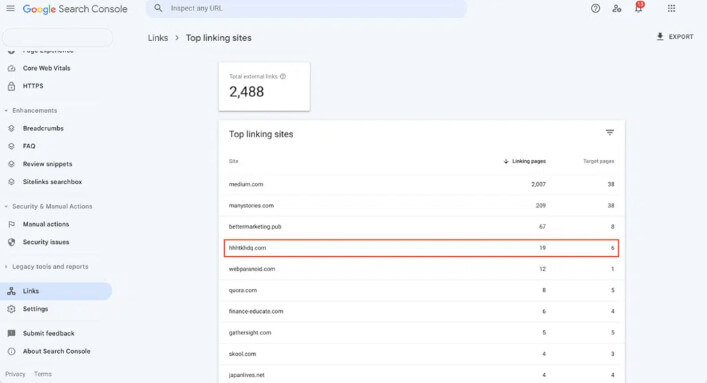
If you've managed to detect illicit links, the next logical step is to either rein in linking sites or disavow unnatural backlinks from sites that refuse to redirect indexed pages into the "no archives" state.
This can be done by activating your GSC interface's "Disavow Links" tool. In simple terms, Disavow Links lets you submit a text file containing URLs or domains you don't want to be associated with, and Google will do its best not to include these markers as countable backlinks in the ranking algorithm.
All this should be done by uploading the text-based file to the disavow tool using the GSC interface. Maintaining a clean backlink profile will require frequent updates to your backlink rankings.
Use the tools for examining backlinks that Google Search Console provides to identify unnatural links with blade storm ahead to clear them. This way, you'll never again violate Google's webmaster guidelines and gain a site with a low risk of any manual action to keep you away from the top rankings.
Strategies for Eliminating Unwanted Backlinks
Knowing the best practices for removing harmful links is crucial without damaging your SEO. To remove bad backlinks effectively and safely, identify which links are harmful through tools like Google Search Console and other backlink analysis tools.
For people in the digital marketing world everyone is familiar with Semrush who have pretty much evert available analytical tool there is on the market. So take a look at Semrush.com and get yourself on the ladder.
Their analytics are clear and instruction easty-to-follow and used by most industry professionals…
See below an example:
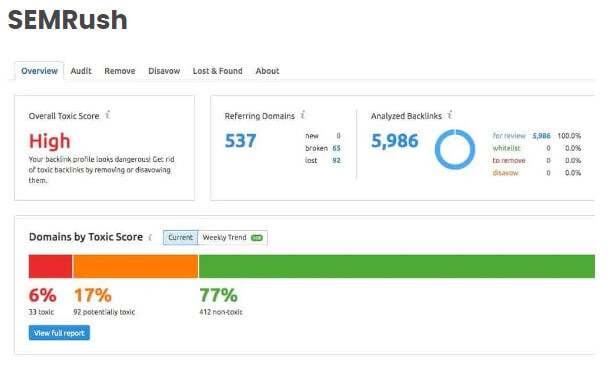
Once identified, classify them based on their spamminess, relevance, and authority. Always aim to remove links that appear to be from link farms, have poor organic metrics, or seem irrelevant to your site's content. Use manual outreach as the first line of action.
This means contacting the webmaster of the site that is linking to you and politely asking them to remove the link. Keep track of these efforts in a spreadsheet for better management. If reaching out doesn't work or if you cannot contact a webmaster, the next step is to use Google's Disavow Tool.
Before using it, gather all the backlinks you want to disavow in a text file, adhering to the specified format. The disavow tool should be used with caution, as it instructs Google to ignore these links when assessing your site's rankings, and misuse can harm your SEO. Therefore, only disavow links you are certain are harmful and couldn't be removed manually.
Approaching the Webmaster - TIPS
When contacting webmasters to request link removal, communicate clearly and professionally. Explain why you are requesting the removal and provide the exact URL of the offending link.
Avoid threatening language or coercive tactics. Instead, be respectful and offer to reciprocate positively, like linking to their quality content if appropriate. Follow up after a week or so if you don't get a response initially, and always maintain records of your correspondence for future reference.
Here's a example from Search Engine Journal how to approach a webmaster and get the result you're looking for:
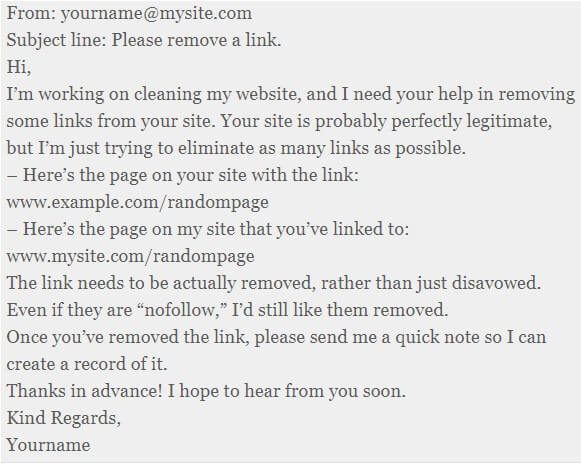
Removing bad backlinks is a delicate process that requires careful management. By following best practices, remaining vigilant, and continuously using the right tools to keep an eye on your backlink building while adopting efficient communication strategies for link removal outreach, you can improve your site's SEO health without causing unintended harm.
The Disavowal Tool: A Closer Look
Introduced in 2012, Google's Disavow Tool allows webmasters to let Google know about links that shouldn't appear on the site: toxic backlinks (often a result of negative SEO attacks) that have been built in violation of commercial norms.
Disavowing poor-quality links informs Google to eliminate the links from the calculations determining the site's rank - a process of "cleaning up" a site and averting the risk of being hit by Google algorithm updates. But as SEO experts and even Google themselves will tell you this is really only to be used if absolutely necessary, like the "joker in the pack" or "the last resort". You are but better off trying all other options before disavowing.
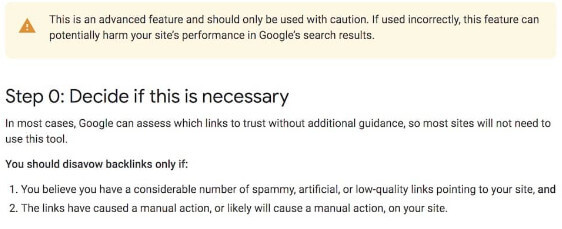
And like anything in SEO, the tactics for maintaining backlinks will also change. It's not out of the question that we might soon see machine learning and AI playing a greater role in helping to figure out links that might harm you and then disavowing them on your behalf.
What the Future Holds
Who knows - one day, the "bad backlink" criteria and the algorithms search engines use to grow and develop might change. It's not unlikely that SEO tools will get more automated when it comes to alerting site owners about choking link profiles or suggesting that they perform disavowals.
In short, the long-term future of backlink management is likely set towards a much more "hands-off" kind of strategy, where a site owner is simply putting their trust in some really complex tools to keep their profile healthy.
SUMMARY
While disavowing bad backlinks is something that should be considered a last option, it is nonetheless an important tool to manage a healthy SEO profile. After all, in order for great content created through a white hat SEO ethos to have an impact on a site's ranking,
Google's Disavow Tool is standing in the way of a bad backlink. As automation continues to become more advanced, management of backlinks and disavowal itself will become more efficient, and all webmasters will be able to safeguard their websites with just a click of a button, making it easier than ever before.




